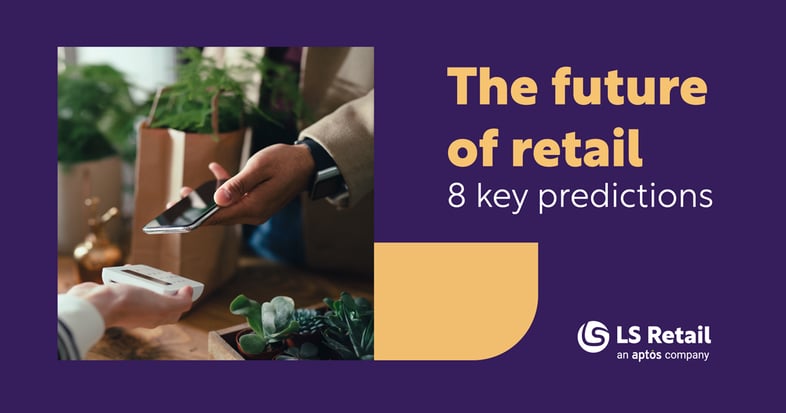
This is a year driven by speed, technology, and continuous change. Retailers need to adapt or risk disappearing. To help you stay ahead, we’ve consulted experts and analyzed current trends to bring you eight key predictions shaping the future of retail.
1. Speed and convenience: meeting the demand for instant gratification
Speed and convenience are the core qualities defining a top shopping experience. Customers increasingly demand faster service—whether it’s delivery, restocking, or finding the best deals. One-day delivery is quickly becoming the industry standard, and some retailers are going further with same-day or even one-hour delivery. Companies leveraging dark stores and micro-fulfillment centers—like Amazon with its Prime Now service—are dominating this space.
Retailers that simplify daily shopping routines through technology will stand out. Think of apps like Instacart, which allow customers to shop from multiple stores with ease, or Uber Eats expanding into convenience retail. Speed remains the name of the game.
2. Hyper-personalization through AI and data-driven insights
Personalization is no longer optional; it’s a necessity. Today’s customers expect tailored experiences, and advances in AI and machine learning are making hyper-personalization possible. Retailers can use predictive analytics to recommend products based on past purchases, integrate augmented reality (AR) to create virtual fitting rooms, or even offer custom-built items using 3D printing technology.
For example, Nike’s mobile app leverages AI to provide customers with personalized sneaker recommendations and even lets them design their own shoes. Retailers who integrate customer data across all touchpoints—from online browsing to in-store visits—will gain a competitive edge.
3. Frictionless payments: simplifying transactions for customers
Frictionless payment methods are becoming central to a seamless shopping experience. Contactless payment, mobile wallets, and biometric solutions are leading the charge. Apple Pay and Google Wallet are now standard options, and biometric methods like fingerprint and facial recognition are becoming increasingly secure and common.
Beyond convenience, buy-now-pay-later (BNPL) solutions like Klarna and Afterpay are giving customers flexible payment options that drive higher conversion rates. Looking ahead, blockchain technology may continue to improve payments by enabling secure and transparent transactions.
4. AI and predictive analytics: revolutionizing retail operations
Artificial intelligence is transforming retail operations. By leveraging AI, retailers can optimize inventory, predict demand, and even adjust pricing dynamically. Predictive analytics tools analyze customer behavior to anticipate trends, helping businesses stay ahead of the competition.
Real-life examples include H&M’s use of AI to monitor trends and allocate inventory more efficiently, and Sephora’s virtual assistant, which uses AI to recommend personalized beauty products. For software providers, integrating AI into retail solutions offers immense value, enabling retailers to make smarter, faster decisions.
5. Mobile-first strategies: enhancing shopping journeys everywhere
Mobile technology continues to reshape the shopping experience. Smartphones have become essential tools for browsing, buying, and comparing products. Retailers that invest in mobile-first strategies are seeing strong returns, whether through dedicated apps or mobile-responsive websites.
In-store, mobility takes the form of mobile point-of-sale (mPOS) systems, enabling staff to assist customers on the spot. Retailers are also turning to self-service kiosks and ScanPayGo solutions, which allow customers to skip checkout lines entirely by scanning items and paying directly via their smartphones or kiosks. For instance, Amazon Go stores exemplify this trend with their "Just Walk Out" technology, letting customers shop without stopping at a traditional register.
These innovations not only improve the shopping experience but also reduce operational bottlenecks, providing faster and more convenient service to busy customers. Retailers who adopt these tools will create a smoother and more efficient shopping journey for their audiences.
6. Small-format and hybrid stores: adapting to customer needs
Small-format stores are flourishing as retailers adapt to changing customer needs. These stores offer curated selections and flexibility, making them ideal for urban environments and time-strapped shoppers. Brands like Target and Walmart have successfully introduced smaller store formats that cater to local markets.
Beyond size, hybrid concepts are gaining traction. Stores that combine shopping with experiences—like Lululemon’s fitness studios or REI’s in-store climbing walls—are engaging customers in new and memorable ways.
7. The shift to omni-experience: unifying customer journeys
Consumers expect a consistent shopping experience across all touchpoints, whether online, in-store, or on mobile. Unified retail software like LS Central for retail consolidates all business operations—sales, inventory, customer loyalty, and more—into a single system. This seamless integration enables real-time inventory visibility, accurate pricing, and personalized promotions, ensuring seamless transitions between channels.
For example, customers can check product availability online, reserve an item, and pick it up in-store without delays or confusion. Centralized data allows retailers to synchronize promotions and pricing across all channels, improving efficiency and customer satisfaction. Investing in unified retail software not only simplifies operations but also helps retailers stay competitive in an ever-evolving market.
8. Sustainability in retail: meeting consumer demands for greener practices
Sustainability has become a key driver in the retail industry. Consumers are prioritizing brands that demonstrate environmental responsibility, from using eco-friendly materials to reducing waste. Retailers adopting practices like carbon-neutral delivery, sustainable packaging, and recycling programs are gaining favor with environmentally conscious shoppers.
For instance, IKEA’s buy-back and resell program encourages customers to return used furniture, aligning with their sustainability goals. By incorporating green practices into their operations, retailers not only appeal to customers but also contribute to a more sustainable future, ensuring long-term growth and loyalty.
Keep up or fall behind
The retail industry is evolving faster than ever. Success will depend on adopting the right technologies, understanding customer needs, and providing seamless, personalized shopping experiences. If you need help navigating this transformation, our experts are here to provide tailored advice and solutions. Contact us to learn more.

